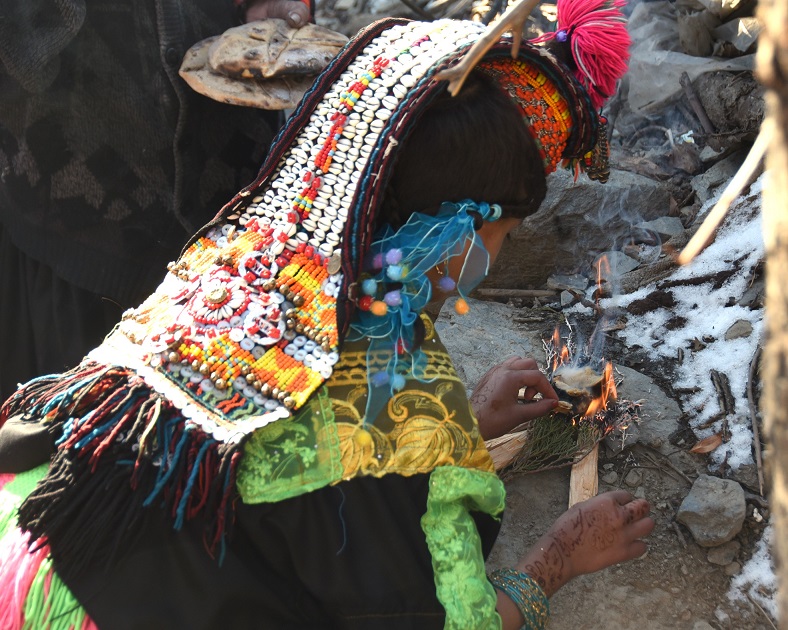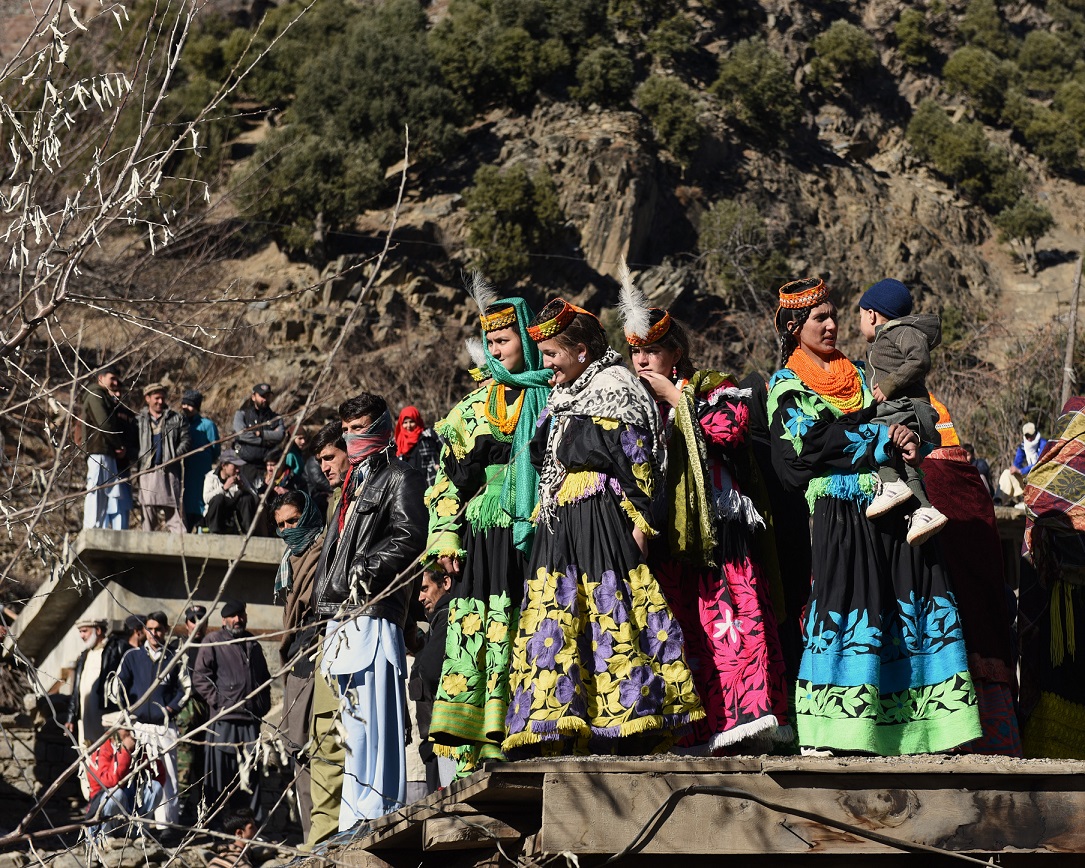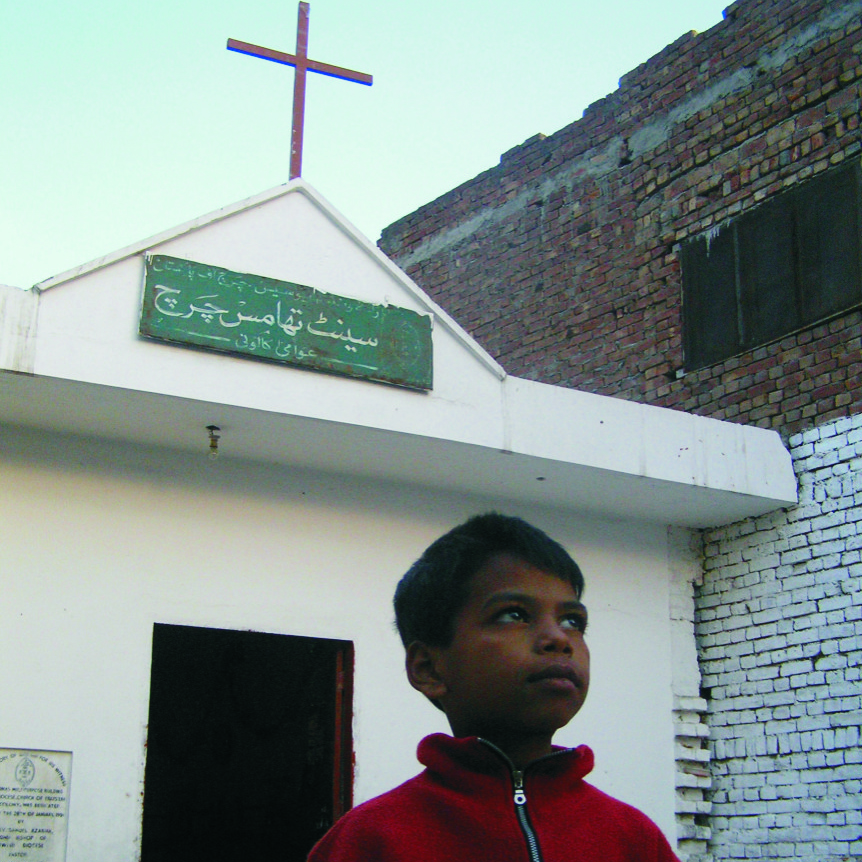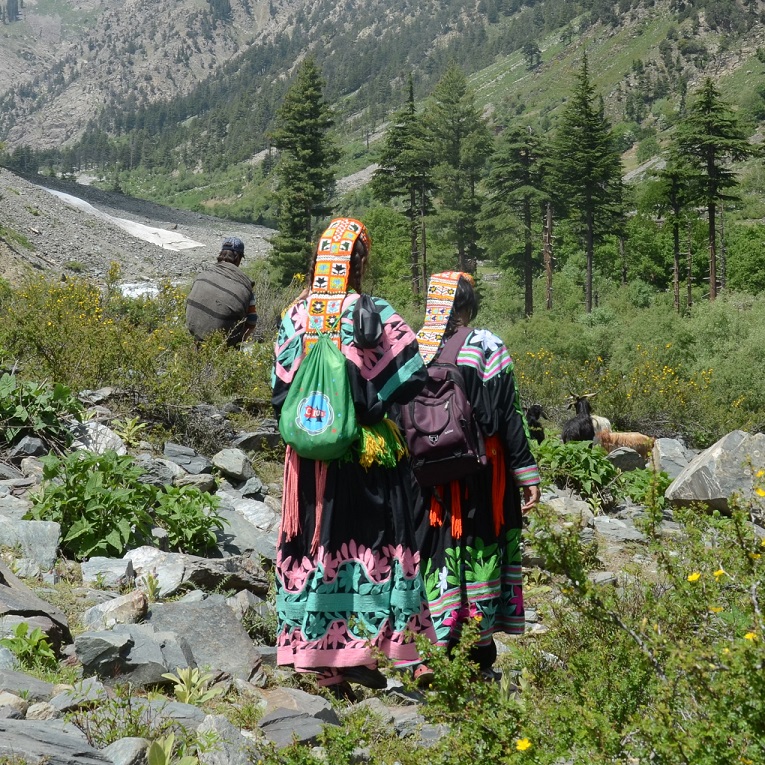Reena, a 20-year-old convert to Islam was murdered in Peshawar by her husband. Unlike most Kalash to Islam conversions, Reena’s marriage with a Muslim man was not a love match.
In June 2016, 14-year-old Reena had gone to a Muslim household and converted to Islam. The exact circumstances which led to her conversion are unknown and no one knows whether it was consensual or coerced.
Asmat, a 29-year-old Kalasha, recalls when a frightened and regretful Reena came back to her parent’s house after the conversion. A neighbourhood woman consoled her and told her that if her conversion had been under duress, or she had been unsure, then Reena is still a Kalasha. Upon this reassurance, Reena resumed her Kalash dress, however within hours a violent Muslim mob gathered outside her house, pelting it with stones.
“The same boys, lying about drunk in Kalash houses, led the stoning”, says Iqbal Shah, a primary school teacher in the Bamborat Valley, Chitral. “All the alcoholics were at the forefront of protecting Islam”.
The Muslim and Kalash communities in Chitral, have a prolonged history of peaceful co-existence. According to Asmat, she had never before witnessed such a violent tussle between the two populations in her life.
Parwana Jaan, a young Kalash filmmaker, living in Reena’s neighbouring village, ran to her house to record the mob gathering outside her house. “A Muslim man threatened me to turn back or he would slaughter me,” Jaan recounts. “After being taken from her home she wasn’t allowed to talk to anyone. Even representatives of international media organisations were turned away,” he says.
On 14 June 2016, Reena announced that she has voluntarily converted to Islam during a press conference in Chitral. Abdul Khaliq, a Kalash elder, says that Reena was a distant relative and her grandmother had told Khaliq that Reena was under great pressure. She was confined in a Muslim house guarded by dozens of men, some of whom were also related to Khaliq. Most families in the valleys are a mixture of Muslims and Kalasha. The converters and the converted girl were Khaliq’s own blood. “They told her that they will burn down her house, her parents and even the whole village, unless she came with them,” he says, “perhaps the threats of bloodshed and destruction in her community, made her tell the Jirga that she had converted without duress.”
She was subsequently sent to live with her Muslim relatives, who married her to a police officer 15 years older than her in Peshawar.
According to Khaliq, the husband had wanted to marry a Kalash girl, but wasn’t able to find one willing to convert to Islam. Since Reena was now a Muslim, her marriage was arranged to him. Such arranged marriages are alien to the Kalash community, as young women are free to marry whomever they choose.
Counting conversions
According to a 2018 report by the Human Rights Monitor, from 2000-2012, 1733 cases of conversions were reported in Pakistan. As per the Centre for Social Justice (CSJ), 78 cases of forced conversions were reported in 2021. Most of the cases involved under-aged girls from Sindh, while only two cases were reported from Kalash.
Peter Jacob, the executive director of CSJ says that there are hundreds of unreported cases from Kalash because the Kalasha communities are scared of mob violence, as is apparent in Reena’s case.

According to Asmat, everyone has a right to choose and practice their religion. “When Kalash girls convert, people say it’s their choice”, unfortunately, Asmat says that religious freedoms are only enjoyed by majoritarian religious groups in Pakistan. Jacob says that although there are no laws stopping Muslims from converting to another religion, there are very few recorded cases of conversions from Islam to a minority religion in Pakistan, without retribution.
An anonymous source from the Kalash says that it’s possible to be a Muslim who was once a Kalash, but not a Kalash who was once a Muslim. “If a Muslim reverts back to their Kalash faith – the other Muslims will kill them”, they claim.
Reena’s death was not even reported by the only local Kalash publication, ‘Ishpata News’. "There is no point in talking about it, she is gone, that chapter is closed," says Luke Rehmat, the founder of Ishpata News and an elected member of the Mumuret village council. He says that they didn't publish it for “obvious” reasons which speaks volumes on the atmosphere of fear and hostility in the valley.
Historical persecution
Historically, forced conversions were among the biggest threats to the Kalasha people. According to the International Union for Conservation of Nature's (IUCN) estimate, the Kalash population was almost 20,000 in the year 1320 AD. Until the late 19th century, the Kalash were spread all over present-day Pakistan and the Afghan province of Kafiristan. In the 1890s, Kafiristan was renamed Nuristan after a grand massacre of the Kalash people in Afghanistan by Amir Abdur Rehman. By the 1950s, the Kalash population had decreased to 8000.
Khaliq says that he often receives anonymous threatening letters, "they say they will kill me, kidnap our women, and marry them."
Shah says that Kalash women have always been targeted. In their folklore, there is a story of sixty women committing suicide to avoid conversion and kidnapping. Khaliq says that cases of forced conversions among girls are rampant. Some of these cases are amicably resolved in favour of minors through jirgas. He gives an example of a case 12 years ago, when a 13-year-old girl was drugged, kidnapped, and forcefully converted. Khaliq says that Kalash men fought and brought her back. The case was taken to the magistrate in Chitral where the girl said that she hadn’t converted.
“The magistrate said that if this girl says she hasn’t converted, then it means she hasn’t converted, it does not matter if she says that after a month or five years,” says Khaliq.
Asmat remembers at least three more conversion cases amongst minors which were silently resolved by local elders and religious leaders. While the minors were returned to their families, it was a pyrrhic success which left three young children with life-long traumas. According to Asmat, “they are shunned and mistreated by both the Muslim and Kalash communities, despite the passage of time”.
 Some Kalasha women are standing on a rooftop (Photo by Srosh Anwar)
Some Kalasha women are standing on a rooftop (Photo by Srosh Anwar)In the 2000s, the government of Pakistan took various measures to protect the indigenous communities of Kalash. Preaching was banned and security was tightened. “The Pakistani government is providing us with security and helping as much as they can. They have posted the army here as well, we are satisfied with the government and their efforts," says Khaliq.
Conversion trends: minors in love
Despite the state’s presence and monitoring efforts in Chitral, there are many remaining threats to the Kalasha existence. While some are tangible such as forced conversions and acts of terrorism – others are less obvious – such as undue religious pressures from Muslim school teachers along with other socio-economic pressures.
“No one can convert through coercion and force these days,” says Sayad Gul, A Kalash activist and archeologist. “It is easier to address coercion because one can see it, there are laws for it. But brainwashing is done silently and it goes unnoticed,” she adds.
According to Rehmat and a survey by the village council, the Kalash female population (1833) is declining in comparison to men (2039). Gul thinks that the majority of Kalash converts to Islam are minor girls between the ages of 14-18, converting for the sake of love and marriage. “Many of these marriages end up in divorce, and in such cases these girls aren’t accepted by either religious group. Once they convert, there is no looking back. They have to give up their families, cultures and identities along with their religion”, says Gul, “in Reena’s case she lost her life due to the chain of events that led up to her marriage”. According to Asmat, “despite the changing norms and attitudes against child marriages, teenagers are impressionable, and concerted efforts are made to influence and convert young girls”.
Forced conversions go hand in hand with child grooming. According to the ‘International Convention for the Suppression of Traffic in Women and Children’, child grooming is a practice in which predators establish friendly and emotional relations with children and their families to lower their inhibitions, before initiating any form of sexual abuse. Jacob says that while there aren’t any laws against child grooming in Pakistan, it falls under the umbrella of amendment 498B to the Pakistan Penal Code.
Also Read

One in every five Christians missing in census
“The amendment was passed without any debate. Litigation isn’t possible when the government doesn’t acknowledge a crime, let alone informing, training and sensitising the police and courts on handling such cases,” says Jacob.
Lack of data
There is no government data on conversions in Kalash. The 2017 Population Census does not recognize the Kalash as a distinct ethno-religious group and categorises them under ‘others’. The Muslim population according to the same census has steadily increased in the Kalash villages in the past few decades. The Ayun Union Council (UC) comprises 27 villages with a total population of 28,182. The Kalash reside in 15 of these 27 villages, and make up only 1 percent of the population in 8 of these villages.
According to a 2019 report by the Human Rights Commission of Pakistan – the Kalash population was 41,00 in 2013 making it 14.5 percent of Ayun UC’s total population. However, according to the local Kalash census, their population reduced to 3,872 in 2017, due to a high death rate and rapid conversions to Islam.
According to an informal census by Taleem Kalash, a local researcher working with the Aristotle University in Greece on Kalash language and culture, approximately 7,775 Kalash have converted to Islam in the past decade.
Gul says that she has seen an upward trend in conversions during the last couple of years, especially in the Birir valley. Birir’s total population in 2015 was 6,242 which comprised 570 households, according to the Water User Management Plan, a 2015 report by the Swiss Agency for Development and Cooperation. Muslims made up 74 percent and the Kalash 26 percent of the total population.
However, according to data collected by Kalash locals in 2017, their population in Birir was 844, or roughly 14 percent. Almost half of Birir’s Kalash population has either died or converted, according to locals.
Khaliq says that according to his estimate, their population has decreased by 5 percent during the last 60 years. “I have 11 children, we are trying to have more children, so our population increases' ', he says.
While the rate of conversion sounds negligible, when compared with increases in Muslims populations in Pakistan – it can be seen in a different light. Analysis of the Pakistani population by the CSJ, between 1998-2017, shows that the Muslim population in Pakistan has increased by 59.30 percent, while populations in the ‘Other’ religions category such as the Kalash, Parsi and Sikh have decreased by 60 percent.
“It disheartens me, I am afraid that one day our tradition may discontinue,” says Khaliq. “I would like our culture to continue, there are many Muslims in the world, and I don’t think God will mind if a small Kalash population remains Kalash.”
Published on 19 Jan 2023




















